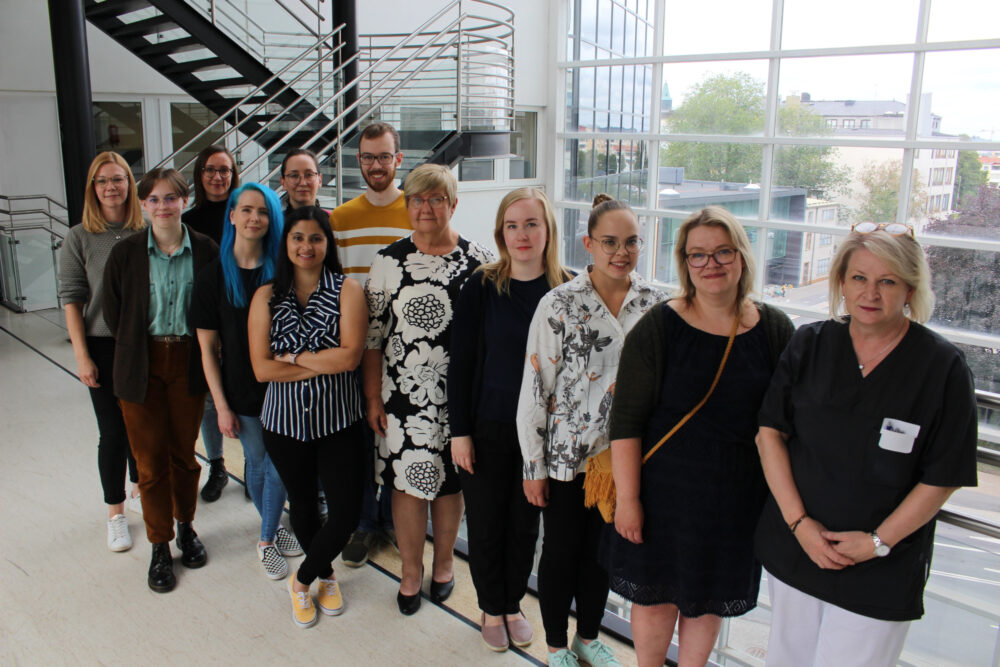Multifaceted macrophages – a potential tool for hormone regulation?
Phagocytes, or “eating cells”, are a fitting name for macrophages that protect tissue by eating intruders. But macrophages also have other tasks and other faces, as Pia Rantakari, Docent and InFLAMES Group Leader, tells us. Macrophages have the ability to communicate with our hormonal system.
“We know that the cells of our defence system have receptors through which hormone cells can tell immune cells how they should work. We believe that this dialogue also works in the other direction,” Rantakari summarises.
One of the subjects of Rantakari’s research group studies is the pituitary gland and the role of macrophages in regulating its function.
The pituitary gland is a pea-sized gland at the base of the brain. The hormones secreted by the pituitary gland are involved in almost all essential events in the body: growth, reproduction, blood pressure and stress regulation, as well as maintaining fluid balance. If the pituitary gland stopped working, the consequences would be fatal.

Macrophages participate in hormone secretion
The pituitary gland contains macrophages, where their role takes on new dimensions: the secretion of certain pituitary gland hormones. This is the hypothesis of Rantakari’s group, which has found supporting evidence.
“The next big question is whether we could use macrophages, for example, when a hormone is secreted too much or too little,” says Rantakari.
She uses growth hormone as an example. If their pituitary gland produced too little growth hormone, a child would not grow normally. This can be corrected by giving the child extra growth hormone. In the case of growth hormone, this works quite well because the chemical is naturally secreted evenly, without a specific schedule. With a few other hormones, the situation is more complicated.
“For example, the hormones that affect reproductive organs are produced in cycles. And some hormones are only produced at a certain time of the day. However, if these hormones are given to people as tablets, they are given evenly and at the wrong time,” says Rantakari.
Hormone production slows down if macrophages are removed
The key research question for Rantakari and her group is whether hormone cells can be affected via macrophages.
“In other words, can we make the hormone cells in the pituitary gland decrease or increase hormone production? Reduction should be possible, because we know that if we remove macrophages from the pituitary gland, hormone production decreases. However, the problem is usually overproduction,” says Rantakari.
The study model of Rantakari’s group is the human reproductive system, where the most serious consequence is infertility. Rantakari does not promise quick solutions to this painful problem, as human reproduction is an extremely complex system where everything affects everything else. There is rarely only one reason for infertility.
However, the pituitary gland is also involved in, for example, the most common hormonal disorder in women, polycystic ovary syndrome or PCOS. It is associated with many types of morbidity, even infertility.
“In PCOS, the ovaries produce too much male hormone. The reason for this is that the pituitary gland secretes too much of a specific hormone that affects the ovaries. Of course, this leads to the question of whether we could influence this by suppressing hormone secretion from the pituitary gland.
Rantakari points out that she is not the only InFLAMES researcher working with macrophages. Each researcher has found a different perspective on these multifaceted cells, which, among other things, are involved in both fighting cancer and, when misled, maintaining it.
Macrophages in tissues originate in the time before birth
Research into macrophages has increased dramatically over the last ten years, when their role was first understood as more diverse than simply eating cells. There is still a lot of work to be done in macrophage research. One of the major issues in the field is whether macrophages in tissues and macrophages that are created in the bone marrow are the same or different. Macrophages in tissues originate in the time before birth and adapt to life in the environment in which they are present. Bone marrow, on the other hand, begins to produce precursors of new macrophages in the case of an emergency, such as inflammation.
Pia Rantakari’s background is in endocrinology, a medical speciality that studies the function of hormones and the glands that secrete them, as well as the diseases of the endocrine system formed by these hormones and glands.
“In my work and basic research, I am inspired by the ability to examine and explain this great system that underpins life. Being able to understand even a small part of this biological miracle. The more I learn, the less I know. But I learn something new every day, and it makes me happy to be able to do my bit. Every piece of knowledge is important, because at some point the pieces will become a brick and soon a whole building. Then we can start developing something that helps people.”
There are 10 researchers working in Rantakari’s team.
